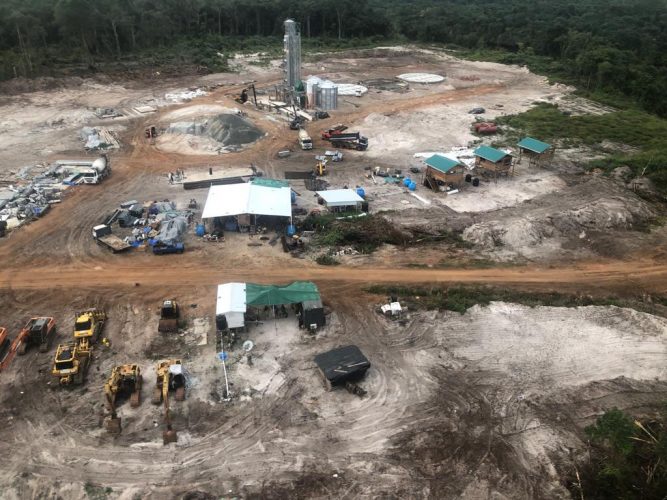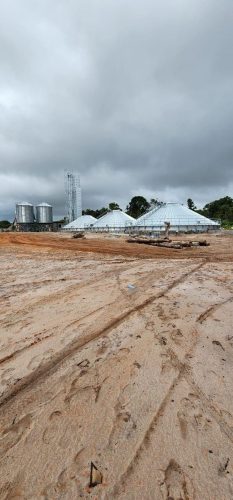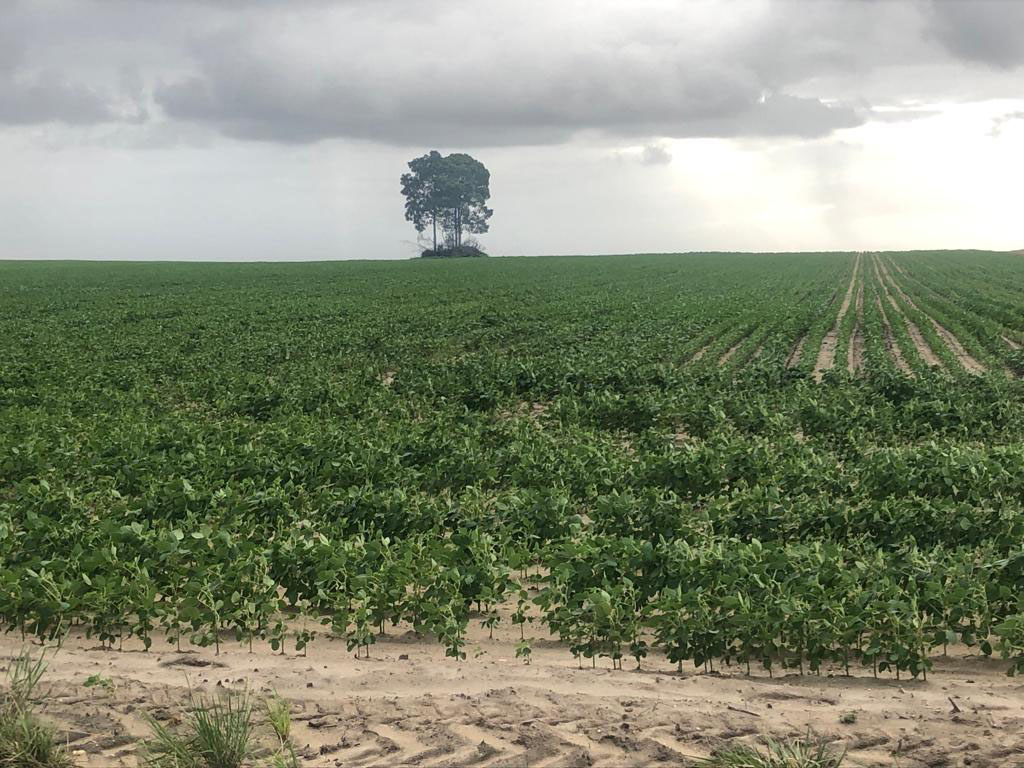As the construction of government’s mega drying facility in Region Ten forges ahead, the Tacama Gold mega-farm is preparing to reap a second successful crop of soybean and both are even more optimistic of reaching desired targets.
“The large silos and drying facility are not yet completed, but we are preparing to reap by the end of this month… It is looking real good,” Director of Tacama Gold David Fernandes told Stabroek News on Friday when contacted for an update.
Minister of Agriculture Zulfikar Mustapha told this newspaper that for the end-of-March crop, some 1,200 tonnes of soyabean will be reaped and that by the end of this year, planting of the crop will increase to about 3,000 acres. He praised the producers for their hard work and dedication.

“We are trying to bridge the gap for importing for the livestock sector. It is hoped that by 2025 we will be at least producing and meeting the need for especially soya, even as we work to reduce our corn and soya imports. I hope that we can, by 2025, meet the soya targets,” he said.
Mustapha said that the government will press to ensure the livestock feed targets are met, as this is directly related to the overall minimizing of Guyana’s import food bill, in keeping with Caricom’s 25 by 25 food goal.
He said the soya project is an example that this country can not only meet its target but be of help to sister nations in reaching theirs.
As regards the drying facility, he said work is coming along and the project will be completed in another few months.
Minister of Finance Dr Ashni Singh, during his 2022 budget presentation, had told the National Assembly that the government had committed $236 million for the procurement of a drying and storage facility and an additional $225 million for installation and other work.

A further $426 million will be spent to complete the rehabilitation of 47 kilometres of a vital Ituni to Tacama farm-to-market road, starting from the junction of the Linden/Ituni road and heading east towards the Berbice River. Last year, some $102 million was spent to commence rehabilitation works on the road.
In December, Fernandes, who leads the consortium spearheading the project, confirmed plans for two crops per year, given better than projected yields.
“We did quite well because this is all virgin soil. Right now, everything looks promising because one of the fields did three tonnes per hectare… We projected less, because this was a field that nothing was ever planted on before, ever. We went and put in the seeds and the area did magic,” he had said.
“So we basically used parameters that are global to be able to calculate the lands we would need to produce this [the amount of crop]. Now if you note here, we were only to do one crop per year, but when we did the trials at Dubulay Farms, we figured out that we could actually do two crops a year. We are going to be doing that because we reaped one crop and have started planting the other already. That [planting] process will end next week,” he added.
He is optimistic that “if the man upstairs [God] keeps blessing us, we will get better and better after every crop.”
Fernandes explained that the group had asked government for 85,000 acres of land but was given 27,000, so that the venture could be assessed before additional land was given. “We have to do a good job before they would, obviously, look to give us more, which is not a problem,” he said.
However, setbacks with delivery of limestone to neutralise the acidic soil in the Region 10 area, saw planting of only 450 acres as compared to the 1,000 earmarked.
But the company projects that it can get up to 2.2 tonnes per hectare, as the best fields did over three tonnes per hectare this year .
“Our next phase, we will plant 1,000 acres and are doing so now as we speak. Then next year we will start going to 2,500 acres …and so on. We will rapidly expand and hope to get to 6,000 acres…then 15,000 acres. Our goal is to get there fastest,” he said, while pointing out that the goal target is to begin exporting significant amounts through the Caricom Single Market and Economy by 2027 “if not before.”
Fernandes noted that in cultivating the crop the group decided to minimize the use of tilling. ”Most of the places in the world are depleting the organic matter in the soil and causing it to become a desert. We won’t do that. The soils we went and work with, because we don’t want to be chopping our jungles down, we took the worst soils that was available; savannah soils. So we have to increase the organic matter in the soil and make it more fertile. Hence we are now using no or little till methods,” Fernandes said.
“For the second crop, you just shred the crops when you harvest, on top of it and leave it there to become like a mulch; like organic matter, and we will plant on top of that. You will find that after a year or two, you will see the area not as sandy anymore, because that matter will now make the soil quality better and better. We plan to use no till as much as possible,” he added.
The large-scale trial cultivation of corn and soya bean by the private investors was announced in 2021 as a means to safeguard the country’s livestock feed supply.





